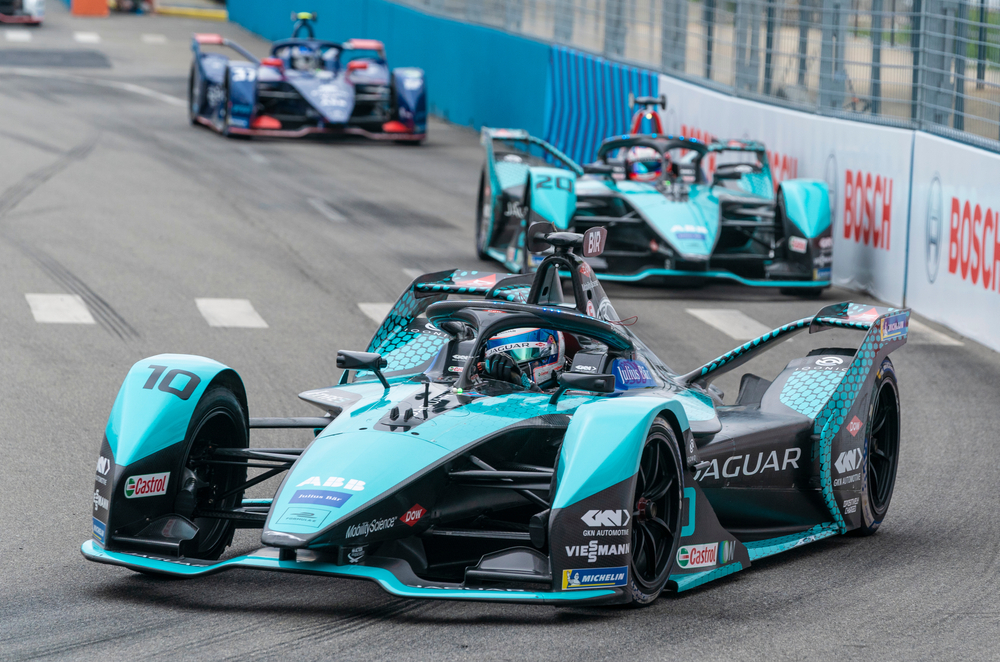Building fully sustainable racing vehicles is no easy feat. While the push for greener technology has made strides in many industries, the high-performance demands of racing present unique challenges. From sourcing eco-friendly materials to balancing speed with sustainability, engineers face a host of obstacles on the road to developing a truly green race car. Here are 15 of the biggest struggles in creating fully sustainable racing vehicles.
Contents
Sourcing Sustainable Materials

Racing vehicles require materials that are not only environmentally friendly but also meet high standards for performance and safety. Sustainable alternatives to carbon fiber, aluminum, and plastics are limited, and the few options available often don’t perform as well under the intense conditions of racing, such as extreme heat and impact forces. Finding or developing materials that balance sustainability with these demands is a key hurdle.
Balancing Weight and Durability

Lightweight materials are crucial for racing because they improve speed and fuel efficiency. However, sustainable materials, such as bioplastics or recycled fibers, often do not provide the same strength and durability as traditional materials like carbon fiber. Achieving the necessary balance between lightweight design and longevity without compromising sustainability is a major engineering challenge.
Battery Technology Limitations

Electric racing cars require high-capacity batteries that can deliver consistent power output for the duration of a race. However, current batteries, especially lithium-ion, are heavy and generate excessive heat, requiring complex cooling systems. Furthermore, they don’t always provide the energy density needed for long, intense racing sessions, making this a major barrier to fully sustainable racing.
High Energy Demand

Racing vehicles require enormous amounts of energy to perform at competitive levels. Relying solely on renewable energy sources, like solar or wind, is challenging due to their intermittent availability. Hybrid or electric powertrains struggle to meet the energy demands of high-speed racing without the aid of non-renewable energy sources, creating a barrier to full sustainability.
Cooling and Temperature Management

Racing cars generate significant heat, particularly in electric vehicles where batteries and electric motors need to be kept cool. Sustainable materials often degrade under high temperatures or require cooling systems that are not eco-friendly. Developing new methods to manage extreme heat without compromising sustainability remains a critical issue in racing vehicle design.
Maintaining High Performance

High performance, in terms of speed, acceleration, and handling, is central to racing. Many sustainable technologies, such as biofuels or alternative materials, can reduce a vehicle’s overall performance, making it difficult to stay competitive. Finding a way to implement sustainability without sacrificing the excitement and performance expected in motorsports is a key struggle.
Infrastructure for Green Energy

Race tracks and their surrounding infrastructure are largely built around fossil-fuel-powered vehicles. Switching to electric or hydrogen-powered cars requires a massive overhaul of facilities to provide charging stations or hydrogen fueling, which most venues currently lack. The cost and time needed to build this infrastructure create a major obstacle for the transition to fully sustainable racing.
Cost of Green Technology

Sustainable technologies such as advanced batteries, eco-friendly materials, and renewable energy infrastructure are often far more expensive than conventional options. Racing teams operate on strict budgets, and the high costs of green technology can prevent widespread adoption, especially among smaller teams. This makes the financial aspect of sustainability a key challenge.
Recyclability of Components

Many components of racing vehicles, including tires, engine parts, and bodywork, are made from materials that are difficult to recycle. Carbon fiber, for example, is highly effective for racing but is not easily recyclable. Developing parts that can be recycled without losing performance characteristics is essential for sustainability but remains a significant technical challenge.
End-of-Life Disposal

Racing vehicles and their components need to be properly disposed of at the end of their lifecycle. However, materials like lithium-ion batteries and composite materials, such as carbon fiber, present significant disposal challenges. Without effective recycling or disposal methods, these components contribute to environmental harm, making it difficult to call the vehicle fully sustainable.
Limited R&D on Sustainable Racing Tech

The motorsport industry has seen limited research and development focused on sustainable racing technologies. This is due to the niche nature of racing and the high cost of R&D. Without significant investment, advancements in sustainable racing technologies, such as advanced biofuels or recyclable materials, are progressing slowly, hindering the development of fully sustainable vehicles.
Pressure for Immediate Results

Racing teams are under pressure to deliver quick results and remain competitive in the short term. This focus on immediate performance makes it difficult for teams to invest in long-term sustainability projects, which often require time and significant initial investment before yielding results. Balancing competitiveness with sustainability goals is a major struggle for teams.
Regulatory Barriers

Racing organizations often have stringent regulations that limit the use of new technologies, particularly when it comes to materials, energy sources, and vehicle design. These regulations were established long before the focus on sustainability, and updating them to allow for more eco-friendly practices can be a slow and bureaucratic process, hindering innovation.
Fan Expectations

Motorsports fans are accustomed to the roar of powerful engines and the speed of traditional racing cars. Sustainable alternatives, such as electric or hydrogen-powered vehicles, often lack the excitement and auditory spectacle that fans expect, making it harder to maintain audience engagement while shifting toward greener technologies.
Supply Chain Sustainability

To truly make racing vehicles sustainable, every part of the supply chain must be considered, from the sourcing of materials to the transportation of parts and vehicles. Ensuring that suppliers and manufacturers adhere to sustainable practices is challenging, especially when dealing with complex global supply chains that are not always transparent or easy to control.
This article originally appeared in MyCarMakesNoise.
More from MyCarMakesNoise
20 Easy Ways People Neglect Their Motorcycle’s Engine

Neglecting a motorcycle’s engine can lead to costly repairs and performance issues down the road. Many riders unintentionally overlook routine maintenance tasks, often resulting in unnecessary wear and tear. Read More
20 DIY Tire Maintenance Tips to Extend Tread Life and Save

Proper tire maintenance is essential not only for extending the life of your tires but also for improving vehicle performance and saving money in the long run. By following simple DIY tips, you can avoid premature wear and ensure your tires last longer. Read More
18 Vintage RVs That Are Now Highly Collectible and Worth Restoring

Vintage RVs offer a unique charm and a glimpse into the golden age of travel, where adventure met retro style. Many of these classic RVs have become highly collectible due to their distinctive designs, quality craftsmanship, and nostalgic appeal. Restoring these timeless vehicles not only preserves a piece of history but can also be a rewarding project for enthusiasts. Read More














